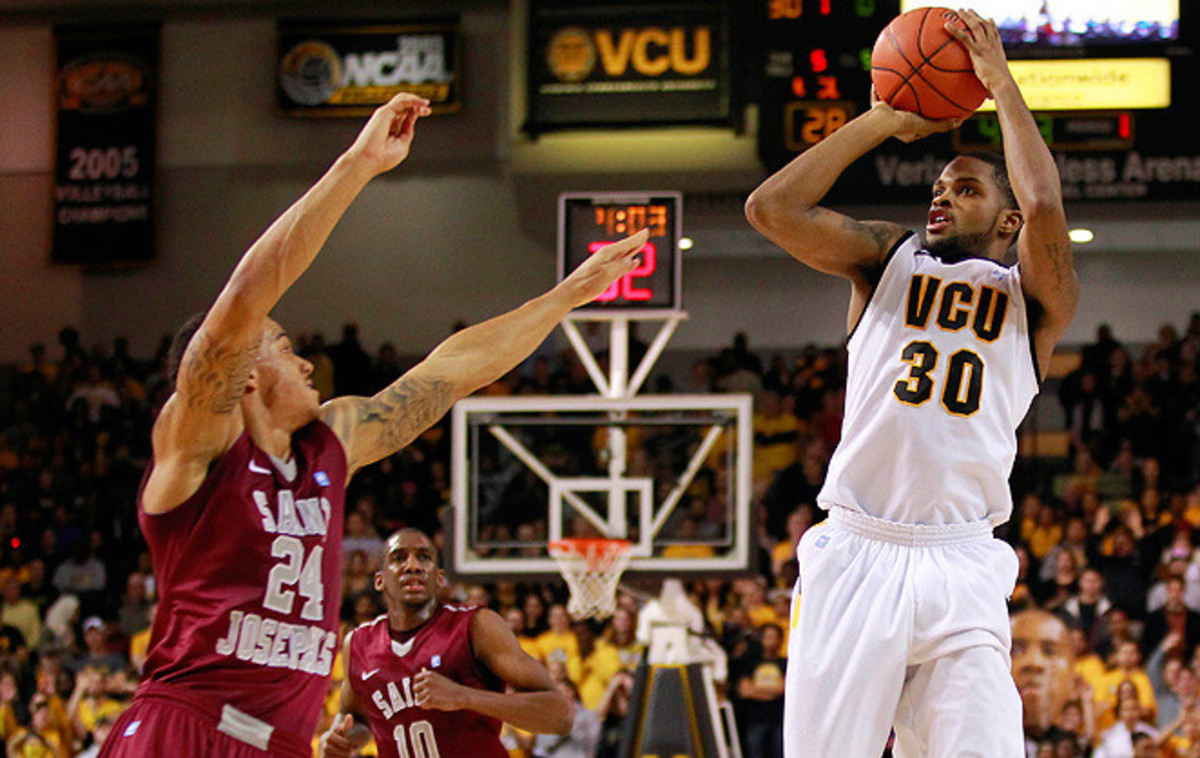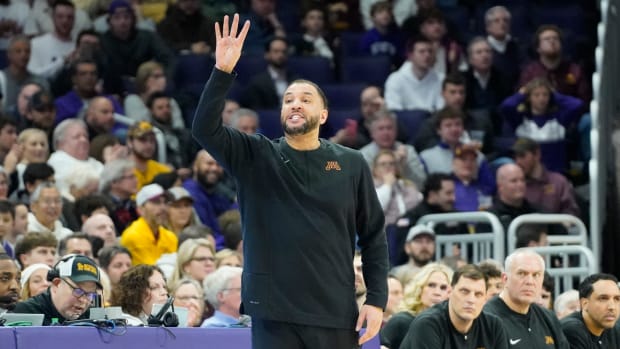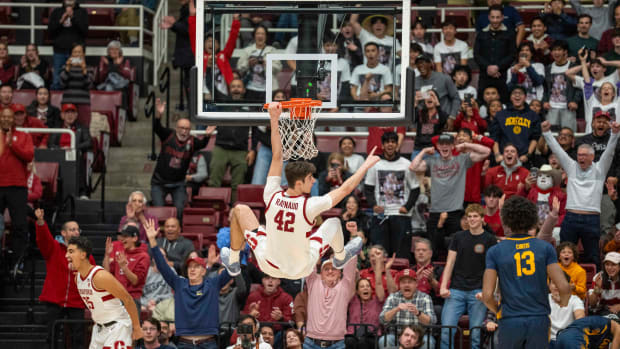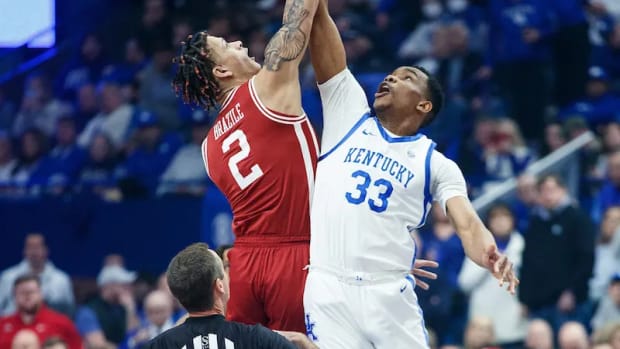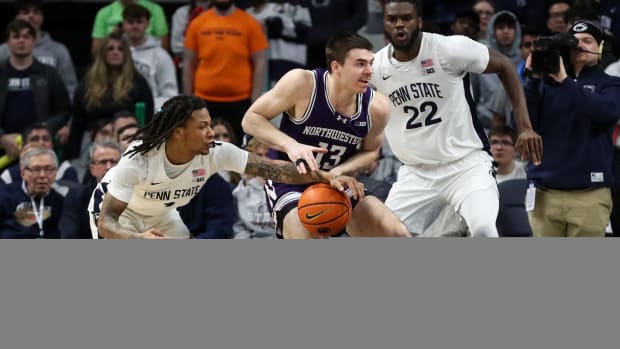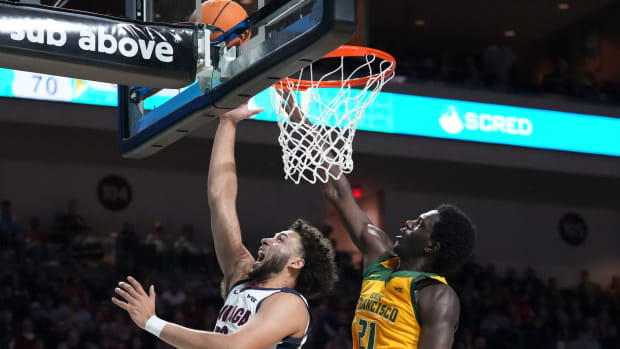Troy Daniels, Jeff Elorriaga among nation's top three-point specialists
Hit or miss -- though mostly in the case of miss -- Daniels had to move on to the next attempt without any residual angst. Verbal cues, Christian decided, would help create a freer mind. It was decided that, after every made shot Daniels took, the 6-foot-4-inch sniper would yell "Fire!," no matter if he was the only soul in the gym. And if the attempt went awry?
Troy Daniels would scream "Beyonce!" at the top of his burning lungs.
"I know it's kind of weird," Daniels said. "When you miss shots, you tend to worry about yourself. I guess the object was for me to not worry about myself or worry about missing a shot, but worry about something else. When I said that, I was worrying about her, instead of worrying about me missing a shot. I trusted that it would work, whatever it took. And it did."
Crazy, perhaps, but the senior is not alone in putting a fling on it. As of Feb. 1, six players nationally were collecting 80 percent or more of their points from three-point range. The number dwindled to four players by Tuesday, and Daniels led the way by accruing 87.45 percent of his scoring via long-distance thrall. The four are not esoteric contributors, all averaging at least nine points and 20 minutes a game.
There are 26 players scoring 70 percent or more of their points on three-pointers, a fraction of all Division I talent. But there is something to this counterintuitive deep thinking -- a koan of arc, if you will -- that suggests the farther out you go, the farther you may carry your team. "Without sounding overly obvious," VCU coach Shaka Smart said, "the value is the scoreboard can move awful fast when those guys get going."
Those guys, the 80-percenters like Daniels, are not common. But they commonly come by these specialized roles very naturally. For Daniels, it was a 22-point effort in his first-ever organized basketball game for the High Street Baptist Church Saints, in which he kept firing from long range and then kept at it for years beyond grade school. For Jeff Elorriaga, it was older brother John pounding him when he approached the rim over the concrete slab in their Portland, Ore., backyard.
"It was more stay away from him and shoot from the outside, because he can't hit you out there," said the Boise State junior, who ranks third nationally with 85.92 percent of his points coming from three-point land. "He'd always hand-check really bad, he'd always be kind of pushing me around. And any time I got close, I'd always get caught with an elbow or something. So I had to keep my distance."
Throughout his career at Portland's Jesuit High School, Elorriaga worked with Dave Immel, a former UCLA player and a shot guru, to hone his mechanics and establish consistency. The Jesuit program, too, spread the floor and relied on the three-pointer. By the time he walked on at Boise State, Elorriaga figured his best shot was a long shot, and now he's averaging 10.3 points with 59 of his 69 field goals from three-point range.
He gets requests from classmates and even the Boise State radio guy for three-pointers on a given night. At 6-2 and usually playing as an undersized four-man, the looks generally come. But Elorriaga argues that being one-dimensional actually enhances the dimensions of an offense for a 16-7 team that may land on the NCAA tournament bubble.
"It helps the spacing, that's the biggest thing," he said. "If a guy doesn't help off, then we have a driving lane. If he does, then we have the open three. It's more the threat. It's pick your poison, almost: Do you want to give up a layup or an open three? Last year we were kind of clustered, we didn't have very good spacing. And now our spacing, it feels like we're almost an NBA team."
Growing up, Mike Felt was a point guard whose game did not stop at the arc. His father, Virgil, was a teacher and therefore had keys to the gym at Redwood Valley High School. Felt's nightly workouts there could involve 500 shots, but he never felt pigeonholed as a jump-shooter. Then he arrived at North Dakota State and toed the line, never slipping below 74.5 percent of his points coming from three-point range.
Felt was at 80.97 percent as of Tuesday. He has learned, he says, that "it's the third, fourth, fifth cut of a possession" that might catch a defender on a screen. Whereas Elorriaga spots up or finds looks trailing in transition, Felt creates gaps in defenses via constant movement. Even if defenders are ready for him well before tip-off.
"We'll be setting a screen and roll at the top and I'll be spacing out in the corner and my guy will be two inches away from me with his face right in my chest, not even worried about what else is going on," Felt said. "You have to understand it's not about getting up a shot on that possession. It's about opening the court for other players to be able to make plays a little bit easier than they would if that defender was sagging off or clogging up the middle."
Daniels, meanwhile, is no mere distraction. He averages 12.3 points, third-best on the team. On Feb. 2, he detonated for 29 points, including seven three-pointers, against Fordham. VCU has lost one game when Daniels scores in double figures. He is the perfect exclamation point on the suffocating pressure Smart's system applies.
"Especially when we're in our press, and when we steal the ball and it leads to me making threes, it kind of crushes the team," Daniels said. "If I make two field goals, and they happen to be threes, that's six points. A game can get out of hand real fast with a lot of threes. I can change the game like that."
After that first rec league outing, Daniels' mother, Cheryl, told her son that he was a shooter, and he'd always be one. Once he got his own backyard hoop in Roanoke, Va., Daniels had a highly regimented after-school program. "It was about 95 percent, 100 percent shooting," he said. "All the time."
Tellingly and hilariously, Smart lauds Daniels expanding in the past two games to hit four of his 14 total two-point buckets. Ultimately, specialization suits Daniels. But that still requires multitasking. He must use his good size and ability to elevate to make seemingly contested shots less so, and he must relentlessly pursue a sliver of space with defenders in relentless pursuit of him.
"Very often, those kinds of players are perceived as one-dimensional, like catch-and-shoot guys," Fordham coach Tom Pecora said. "But there is a lot to their game if they have the ability to free themselves. And I think that's an art form that people don't appreciate all the time. When people are watching the ball and they say, 'Oh, wow, he's open again,' very often they don't see all the hard work that goes into him getting himself open, him using screens, and his teammates understanding what they need to do to get him good looks."
A quick-trigger moment is the residue of a long process, something now underscored in every workout. After Christian's departure for the Mount St. Mary's head coaching gig, new VCU assistant Jeremy Ballard simplified Daniels' practice code words: Every time Daniels misses, he yells "Process." Follow it, he believes, and he'll make his share.
"I feel like I can make it as soon as I touch it," Daniels said. "In certain games, the three-point line felt like a layup. It's kind of weird, but it's true. I love to shoot the ball, and I feel like I got enough shots up during the summer that I have the most confidence in the world in that shot when it feels like a layup to me."
He'll take requests, too, unwillingly. Daniels hit 27 three-pointers in one three-game stretch this season and even teammates placed specific orders -- Hey, man, I want eight threes tonight -- after that. Daniels would rather not hear it. He'd prefer to work into the flow and find a shot, anywhere. He doesn't hate two-point shots. But, like only a few others in the country, he doesn't get to know them, either.
"I just like to see the ball go in the hoop," Daniels said. "But I happen to be behind that line."
